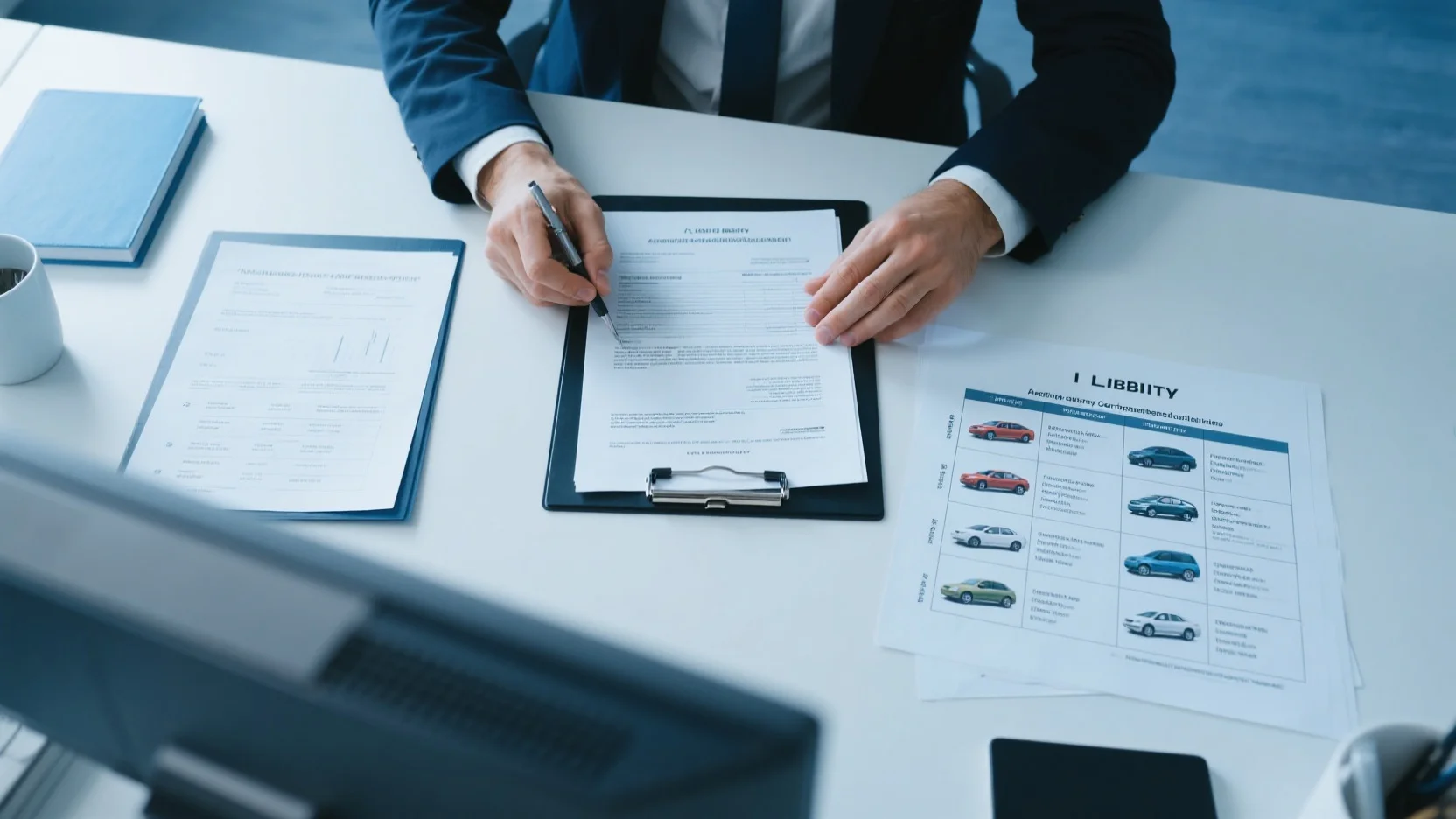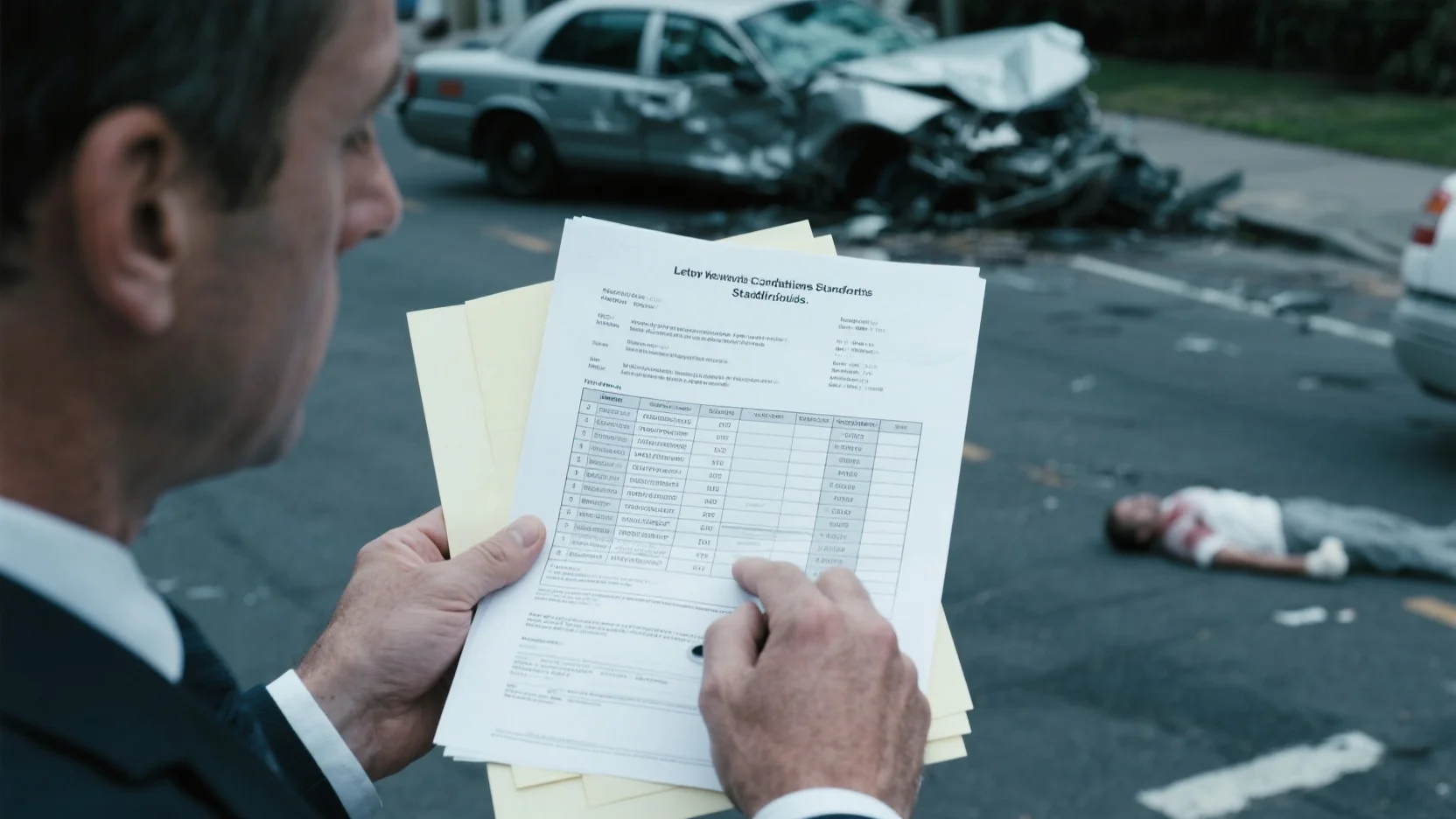
Image Source: pexels
Analyzing legal liabilities and compensation standards in traffic accidents plays a pivotal role in safeguarding individual rights and financial stability after a traffic accident. Traffic laws help establish fault, especially when violations occur. Vehicle ownership often determines responsibility, influencing claims. Insurance companies evaluate damages and liability, shaping compensation outcomes. These factors collectively impact case resolutions.
Key Takeaways
- Knowing legal responsibility shows who caused a traffic accident. This helps people defend their rights and handle legal steps better.
- Rules for compensation explain how money is given after accidents. Understanding these rules helps victims ask for fair payment for injuries and losses.
- Collecting proof, like police reports and witness stories, is very important. Good records make claims stronger and improve chances of fair payment.
Understanding Legal Liabilities and Compensation Standards
Defining Legal Liability in Traffic Accidents
Legal liability in traffic accidents determines who is at fault and responsible for damages. Several components influence this determination. Violating traffic laws, such as speeding or ignoring a red light, often establishes fault. Comparative negligence plays a significant role by assigning fault percentages to all involved parties. This principle directly impacts the compensation each party may receive. Vehicle ownership also affects liability. Owners may share responsibility if their vehicle causes harm, even if they were not driving. Insurance companies evaluate these factors to assess damages and facilitate compensation.
Understanding these components is essential for analyzing legal liabilities and compensation standards in traffic accidents. It ensures that individuals can protect their rights and navigate the legal process effectively.
What Are Compensation Standards?
Compensation standards refer to the guidelines used to calculate the financial recovery owed to victims of traffic accidents. These standards cover various types of damages, including physical injuries, property damage, and psychological harm. Insurance policies and state laws often dictate the framework for these calculations. For instance, medical expenses, repair costs, and emotional distress are common factors considered when determining compensation.

The process also accounts for the degree of fault assigned to each party. In cases involving comparative negligence, compensation may decrease based on the victim’s share of responsibility. By understanding these standards, individuals can better advocate for fair compensation and ensure their financial well-being after an accident.
Types of Legal Liabilities in Traffic Accidents
Negligence and Its Role in Determining Fault
Negligence forms the foundation of most traffic accident liability cases. It occurs when a driver fails to exercise reasonable care, leading to harm or damage. Common examples include distracted driving, speeding, or failing to yield. Courts often analyze whether the driver acted as a "reasonable person" would under similar circumstances. If not, they may assign fault based on this failure.
Negligence plays a critical role in determining liability. For instance, a driver texting while driving may be held accountable for an accident caused by their inattention. Insurance companies and legal professionals rely on evidence, such as traffic camera footage or witness statements, to establish negligence. This process ensures that victims receive compensation for their losses.
Recklessness and Its Legal Consequences
Recklessness involves a higher degree of fault than negligence. It refers to actions taken with a blatant disregard for the safety of others. Examples include excessive speeding, street racing, or driving under the influence of alcohol. Unlike negligence, recklessness often leads to harsher legal consequences, such as criminal charges or punitive damages.
Courts view reckless behavior as intentional or grossly irresponsible. This distinction impacts the compensation victims may receive. In many cases, reckless drivers face both civil and criminal penalties, emphasizing the severity of their actions.
Strict Liability and Its Application in Traffic Cases
Strict liability applies in specific traffic accident scenarios, regardless of intent or negligence. This principle often arises in cases involving defective vehicles or hazardous materials. For example, a manufacturer may bear liability if a faulty brake system causes an accident. Similarly, companies transporting dangerous goods may face strict liability for spills or explosions.
Strict liability ensures accountability, even when the responsible party did not act negligently. It protects victims by simplifying the legal process and focusing on the harm caused rather than the intent behind it.
Determining Liability in Traffic Accidents
Image Source: unsplash
The Role of Police Reports and Investigations
Police reports play a critical role in determining liability in traffic accidents. These reports provide an official account of the incident, including essential details such as the names of drivers involved, witness statements, and an assessment of fault. Law enforcement officers often include their observations and conclusions about the accident, which can significantly influence liability decisions.
- Police reports serve as an official record of the accident.
- They often contain a fault assessment by law enforcement.
- Witness statements included in the report can support claims.
Obtaining a copy of the police report is essential for building a strong case. Insurance companies and legal professionals rely on this document to establish liability and determine compensation.
Accident Reconstruction and Expert Testimony
Accident reconstruction provides an objective analysis of traffic accidents, focusing on physical evidence rather than personal accounts. Experts analyze elements such as skid marks, debris patterns, and vehicle damage to understand the sequence of events. This process identifies contributing factors like speed, driver behavior, and environmental conditions.
- Reconstruction translates physical evidence into a fair analysis.
- Courts and insurance companies rely on these findings for informed decisions.
- Accurate reconstructions help secure compensation for serious injuries.
Expert testimony based on reconstruction findings often strengthens legal cases. This approach ensures that liability is determined through factual evidence, leading to fair outcomes.
The Importance of Eyewitness Accounts and Evidence
Eyewitness accounts provide independent perspectives on traffic accidents. Witnesses often corroborate or dispute the involved parties’ versions of events, offering unbiased insights. Their statements can clarify the sequence of events and help establish fault.
- Witnesses provide independent accounts of the accident.
- Their testimony can corroborate or challenge claims made by the involved parties.
Eyewitness evidence, combined with police reports and expert analysis, creates a comprehensive picture of the accident. This combination strengthens liability determinations and supports fair compensation outcomes.
Compensation Standards in Traffic Accidents
Image Source: pexels
Types of Damages: Physical, Property, and Psychological
Traffic accidents often result in various types of damages, each requiring careful evaluation. Physical damages include injuries such as fractures, burns, or long-term disabilities. These injuries often lead to medical expenses, rehabilitation costs, and lost wages. Property damages involve harm to vehicles, personal belongings, or infrastructure. Repair or replacement costs typically determine the compensation for these losses. Psychological damages, though less visible, can significantly impact victims. Emotional distress, anxiety, or post-traumatic stress disorder (PTSD) often fall under this category.
Understanding these damage types helps victims advocate for fair compensation. Each category addresses specific losses, ensuring a comprehensive recovery process.
How Compensation Amounts Are Calculated
Compensation amounts in traffic accidents rely on established methods to ensure fairness. Two common approaches include:
- Multiplier Method: This method multiplies actual damages, such as medical bills and lost wages, by a specific multiplier. For example, if actual damages total $6,000 and the multiplier is three, the compensation would amount to $18,000.
- Per Diem Method: This approach assigns a daily value for each day of suffering. For instance, if the daily rate is $200 and recovery takes 90 days, the total compensation would also equal $18,000.
These methods provide structured frameworks for calculating compensation, ensuring victims receive appropriate financial recovery.
Factors That Influence Compensation (e.g., Comparative Negligence, Insurance Policies)
Several factors influence the final compensation amount in traffic accidents. Comparative negligence plays a significant role by adjusting compensation based on fault. For example, if a driver is 25% at fault, their compensation decreases by the same percentage. This approach ensures accountability for all parties involved.
Insurance policies also impact compensation. Coverage limits, deductibles, and policy terms often dictate the maximum amount victims can recover. Additionally, the severity of injuries, the extent of property damage, and the availability of evidence further shape compensation outcomes.
By analyzing these factors, victims can better understand their potential recovery and navigate the claims process effectively.
Special Cases in Traffic Accidents
Multi-Vehicle Accidents and Shared Liability
Multi-vehicle accidents present unique challenges when determining liability. The involvement of multiple drivers and vehicles complicates the process of establishing fault. Identifying the initial cause of the accident often proves difficult due to the sequence of events and the actions of various parties. Comparative negligence laws further complicate matters by requiring fault to be distributed among all involved. Additionally, the presence of multiple insurance policies adds layers of complexity to resolving claims.
- The chain of events is often unclear.
- Determining the initial cause of the accident is challenging.
- Comparative negligence laws require fault distribution.
- Multiple insurance policies complicate liability resolution.
Analyzing legal liabilities and compensation standards in traffic accidents becomes particularly critical in these cases. A thorough investigation, supported by evidence such as police reports and eyewitness accounts, is essential to ensure fair outcomes.
Single-Vehicle Accidents: Identifying Other Responsible Parties
Single-vehicle accidents often appear straightforward but may involve other responsible parties. While drivers are typically held accountable due to their control over the vehicle, other factors must be considered. Environmental conditions, such as poorly maintained roads or adverse weather, can contribute to accidents. Vehicle defects, including brake failures or tire blowouts, may also shift liability to manufacturers or maintenance providers.
| Factor | Description |
|---|---|
| Driver Negligence | The driver may be primarily liable for reckless driving or failure to control the vehicle. |
| Vehicle Defects | Manufacturers may share responsibility if defects in the vehicle contributed to the accident. |
| Hazardous Road Conditions | Poorly maintained roads or adverse weather conditions can also play a role in the accident. |
A comprehensive analysis of these factors ensures that liability is assigned appropriately, protecting the rights of all parties involved.
Government-Involved Accidents: Proving Negligence Against Public Entities
Accidents involving government vehicles or public infrastructure require victims to meet specific legal standards. To prove negligence against a public entity, it must be shown that a government employee acted negligently while performing official duties. This negligence must directly cause the accident and resulting injuries. Claims must also be filed within strict time frames, often within two years of the incident, against the appropriate government agency.
Victims face additional challenges when pursuing claims against public entities. Government agencies often have sovereign immunity, which limits their liability. However, exceptions exist when negligence is evident. Legal representation is crucial in these cases to navigate the complexities of filing claims and proving fault.
Understanding liability and compensation standards is essential for protecting legal rights after a traffic accident. Proper documentation strengthens claims and ensures fair outcomes.
- Prioritize Safety and Seek Medical Attention: Address immediate health concerns.
- Call the Authorities: Obtain an official police report.
- Take Photos and Videos: Capture the scene and damages.
- Gather Witness Information: Collect contact details and statements.
- Write Down Your Own Account: Record events promptly.
- Keep Track of Medical Records and Expenses: Maintain detailed records.
Seeking legal advice ensures accurate claim assessments and compliance with deadlines. Attorneys navigate insurance tactics, interpret complex documents, and negotiate fair settlements. Staying informed about traffic laws and responsibilities empowers individuals to handle accidents effectively.
Tip: Always document evidence thoroughly and consult legal professionals to safeguard your rights.
FAQ
What should someone do immediately after a traffic accident?
Victims should prioritize safety, call the authorities, and document the scene. Collecting evidence, such as photos and witness information, strengthens liability claims and compensation requests.
How does comparative negligence affect compensation?
Comparative negligence reduces compensation based on fault percentage. For example, if a victim is 20% at fault, their compensation decreases by 20%, ensuring accountability for all parties.
Can victims file claims without a police report?
Yes, but a police report strengthens claims. It provides an official account of the accident, which insurance companies and courts often rely on to determine liability.


